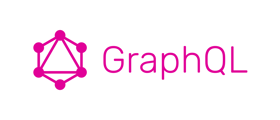- Digital Agency
- Data & AI
- Interface Development


Interface Development Agency
Improve CX & boost efficiency with Seamlessly integrated tools
+20 Years of experience, 170 employees in 3 countries Contact us nowOur services for successful interface developments
To achieve optimal integration of your systems, we have a dedicated architecture and integration team. This ensures that every byte arrives exactly where it is needed. The approach is tailored to your needs and requirements, allowing us to achieve the best results together with you.
-
Status Quo Analysis
In workshops and individual sessions with the users of the systems, we develop an overview of the systems in use and "map" their usage and purposes. We uncover integration potentials and identify current pain points in the use of the systems.
-
Target Group Image Development
The target image clearly depicts the future vision of the system landscape. It describes the process chains and the involvement of individual services in fulfilling specific tasks. Data flows between systems are defined, and a logging strategy is developed to ensure system reliability. The individual measures are prioritized based on their effectiveness and can then be transferred into a clear project roadmap.
-
Implementing the interfaces
In the implementation phase, we connect all involved services through interfaces, map fields, and configure data transformations. By implementing one process at a time and conducting successful testing, we ensure a smooth transition to live operation. This approach enables rapid relief, reduces time-to-market, and yields an early return on investment.
Our Customers: We are growth partners of

















Your advantages with SUNZINET as a full-service agency for interface development:
As a full-service digital agency, we are familiar with the diverse software solutions used by our clients. Especially in the e-commerce sector, there are typically many different systems in use, each representing a small part of the larger value chain: ERP systems, PIM systems, e-commerce platforms, payment providers, as well as external companies such as logistics service providers with their own software solutions, need to be connected. However, even in lead-focused B2B processes with individual quoting and sales processes, there are significant benefits that can be easily achieved through system integration. In addition to ERP systems, the system landscape often includes CRM products and CPQ solutions.
As a digital lead agency with a full-service scope, we have a deep understanding of the needs and processes of different business models from numerous projects with our clients. We can develop and implement a tailored solution for your specific requirements.

We utilize MACH architecture - for more flexibility, scalability and speed
We base our projects on MACH architecture – a modern technological framework consisting of four key components: Microservices, API-first, Cloud-native and Headless.
MACH Architecture allows you to rapidly adapt and integrate the latest technologies without being tied to specific vendors or technology stacks. It also supports a more personalized customer experience and enables faster updates and improvements, driving innovation and maintaining competitive advantage.
Your benefits from a sustainable interface development
-
Process automation
Let your business processes run fully automated across all your software components.
-
Time saving and quality improvement
Avoid tedious and error-prone data transfer between individual systems to save time and improve quality
-
Data Availability in all services
Each service has real-time access to the data it needs. Therefore eliminating delays or dependencies on other services, allowing for seamless and efficient operations.
-
Better Customer Experience
Create a seamless experience for your customers. Anytime and at every touchpoint.
-
Cross-service reporting
Make better data-driven decisions via consolidate data from all your systems on central dashboard.
Your system landscape is in the best hands
We work daily on automating various processes of our clients. In doing so, our experts have the knowledge and experience to integrate a wide range of tools and solutions that are used by our clients.
ERP & Logistics
ERP & Logistics
- Dynamics NAV / Business Central
- SAP
- Various industry-specific solutions
- Amazon FBA
-
Inventory management systems of other logistics service providers
CRM & Marketing
CRM & Marketing
- Hubspot
- Salesforce
- SAP
- Various industry-specific solutions
Business Tools
Business Tools
- Easybill
- Fastbill
- Mollie
- Stripe
- Aircall
- Various industry-specific solutions
BI & Dashboards
BI & Dashboards
- PowerBI
- Tableau
- Google Looker Studio
E-Commerce
E-Commerce
- Shopware
- Magento
- Shopify
- Amazon
- PIM-Systeme

Your system landscape is in the best hands
We work daily on automating various processes of our clients. In doing so, our experts have the knowledge and experience to integrate a wide range of tools and solutions that are used by our clients.
ERP & Logistics
- Dynamics NAV / Business Central
- SAP
- Various industry-specific solutions
- Amazon FBA
-
Inventory management systems of other logistics service providers
Business Tools
- Easybill
- Fastbill
- Mollie
- Stripe
- Aircall
- Various industry-specific solutions
BI & Dashboards
- PowerBI
- Tableau
- Google Looker Studio
Ihre Systemlandschaft in besten Händen
Wir arbeiten täglich an der Prozessautomatisierung unserer Kunden. Dabei integrieren wir ein breites Spektrum an Tools und Lösungen, die bei unseren Kunden zum Einsatz kommen.
ERP & Logistik
-
Dynamics NAV / Business Central
-
SAP
-
Unterschiedliche Branchenlösungen
-
Amazon FBA
-
Lagerhaltungssysteme anderer Logistikdienstleister
CRM & Marketing
-
Hubspot
-
Salesforce
-
SAP
-
Unterschiedliche Newslettertools
Business-Tools
-
Easybill
-
Fastbill
- Mollie
- Stripe
- Aircall
-
Unterschiedliche Branchenlösungen
BI & Dashboards
-
PowerBI
-
Tableau
-
Google Looker Studio
E-Commerce
-
Shopware
-
Magento
-
Shopify
-
Amazon
-
PIM-Systeme
Let us enhance your business processes for better performance
Fill out the form, and we'll connect within 24 hours to discuss your challenges and the initial steps to optimize your enterprise architecture.

-
How can you recognize a lack of system integration?
Mehr ansehenLack of system integration in a company can manifest in various ways. Here are some signs to watch out for:
Data inconsistencies: If you notice that the same data yields different results in different systems, it may indicate a problem with system integration.
Manual data entry: When employees regularly have to manually enter data into multiple systems, it can be an indication of poor integration. A well-integrated system landscape should allow for automated data transfers between systems.
Difficulties in data exchange: If it is challenging or impossible to exchange data between different systems, it may indicate a lack of integration. Smooth data exchange should be possible within a well-integrated system landscape.
Delays and errors: If there are delays or errors due to data or information not being available in real-time, it may suggest a lack of integration.
Duplicate work: If employees have to manually enter the same data into different systems or update the same information multiple times, it may indicate ineffective integration between the systems. -
What is the cost of system integration through an agency?
Mehr ansehenHiring an integration agency to connect your system landscape doesn't necessarily have to be a large-scale project with a high investment. Often, it is worth starting with the integration of the two main systems to ensure a smooth data flow and automated processes between them. This could involve integrating an online shop with an ERP system or connecting a CRM system with a newsletter delivery tool.
Keeping an online shop constantly updated with the latest prices and availability from the ERP system, and syncing the received orders back into the ERP system, can often be accomplished in just a few days. This not only saves significant effort by eliminating manual exports and imports between systems but also delivers immediate benefits. -
How does agile methodology work in interface projects?
Mehr ansehenAgile methodology in integration projects can help to implement the integration of systems and processes more efficiently and quickly. Usually, architects and integrators work closely with the business departments and agree on the following approach:
Requirements gathering: The first step in an agile integration project is to gather requirements. This can be done through workshops, interviews, or surveys to gain a comprehensive understanding of the requirements.
Planning: Based on the requirements, an agile project plan is created, which includes the various steps of the integration project. Priorities are set, and the project scope is defined.
Agile methodology: Agile methods such as Scrum or Kanban are used to divide the integration project into small, manageable units. These units are known as sprints or work cycles, usually lasting one to four weeks.
Development: In each sprint, the requirements are implemented. This involves developing code, conducting tests, and implementing the systems. The development teams work together to achieve the best possible result.
Testing: After each development phase, the systems are tested. It is ensured that the integration is successful and that all requirements are met. If any issues are found, they are addressed in the next sprint.
Deployment: Once the integration system has been tested and validated, it can be deployed into production. The agile team ensures that the system is rolled out in a controlled environment and that all stakeholders are informed.
Feedback: Agile methodology requires constant review and adaptation. After each sprint, there is a feedback discussion to evaluate success, identify issues, and plan actions for the next sprint.
By using agile methods, integration projects can be implemented faster and more efficiently as they allow for early identification and resolution of problems. Agile integration can also help improve collaboration between development teams and other stakeholders, leading to a successful integration project. -
What is a Microservice-System architecture?
Mehr ansehenModern system landscapes are characterized by microservice architectures - the software monolith is outdated. This shortens the time-to-market for new features and increases maintainability. Each microservice is an independent process that performs a specific task or function.
In contrast to a monolithic architecture, where all functions are consolidated within a single application, a microservice architecture is modular. This means that each microservice can be developed, tested, and delivered independently without affecting the entire system.
Microservices are typically lightweight services that communicate using a common platform such as a RESTful API or a message-based middleware. By using an open interface, each microservice can be developed independently of the underlying technology.




















